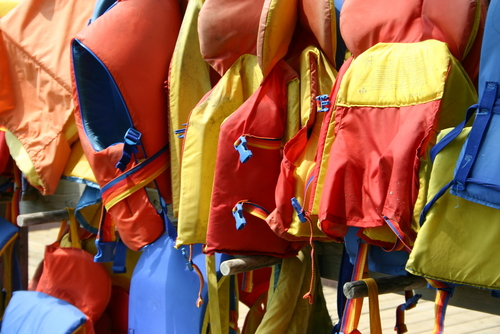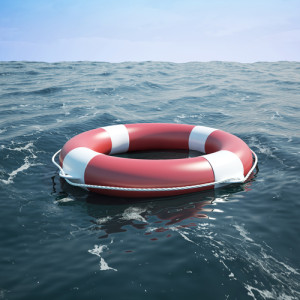Nearly 1,500 people died when the RMS Titanic sank on the morning of April 15, 1912. However, although authorities in 1912—and most people since—have understandably attributed the cause of these deaths to drowning, the majority of people died from hypothermia. The waters of the North Atlantic hovered around the freezing point, which killed the healthiest Titanic passengers in roughly 15 minutes, and the elderly, infirm, and the young in much shorter periods of time.
The case of the RMS Titanic illustrates not only the importance of proper construction, safety equipment, and good judgment but, also, of knowing the right cold-water survival techniques.
If you live in a cold region and near to a body of water, knowing how to survive in freezing waters is essential. Once hypothermia—which occurs when an individual’s body temperature drops below 95°F (the normal body temperature is 98.6°F)—sets in, the brain’s temperature regulation system malfunctions and internal organs begin to shut down.
Safety is key, and being informed is critical. As such, we’ve listed a few key ways to maximize chances of survival in cold water, below.
1. Personal Flotation Devices
This device is an obvious and familiar option, but not one to undervalue. Many states mandate boaters to keep personal flotation devices that comply with Coast Guard regulations on board. Regardless of whether you consider yourself a strong swimmer, wear a personal flotation device if you will be out in a cold body of water. These should be worn before you get on a boat or ship, as it is almost impossible to put one on after you are already in the water.
Personal flotation devices work both to keep you afloat—which is key because you want to minimize the amount of your body that remains within the water—but also as partial insulation against the cold water.
Personal flotation devices come in several varieties, some of which are better for cold water survival. For example, a vest will provide some insulation, but an insulated floatation jacket will cover more of your body than the vest, thus further increasing your chances of survival. Adding reflective tape or strobe light to your flotation device will increase chances of rescue, as will a whistle.

2. Proper Clothing
Anyone who comes from temperate or northern regions knows the importance of high-quality, warm clothing for colder months. Equally important is knowing which pieces of clothing are most crucial to staving off the cold, and how to layer effectively. It is key to properly cover parts of the body that lose heat quickly: the sides of the chest, armpits, and the head and neck.
Above all, avoid cotton, which provides no insulation and is heavy when wet, and layer your clothing. Opt for either fleece or wool, covered by waterproof outer layers made from materials such as Gore-Tex or nylon. Choosing the right materials, and layering them correctly, will keep your body temperature up and the cold water out.
The importance of layering cannot be overstated; even the most watertight outer layers may offer little to no insulation, leading to hypothermia just by the outer layer getting in contact with cold water, even if no liquid seeps through to your skin.
3. Behaviors
First, keep as much of your body out of the water as possible. The more of your body in direct contact with cold water, the more rapidly your body temperature will drop. This behavior is promoted by using a personal flotation device. You can also grab onto your capsized vessel or another floating object to try and get more of your body out of the water.
The drown-proofing behavior of repeating dunking your head slowly into the water and back out again contradicts this cold-water survival technique and is not suggested in cold water situations.
 Second, most experts recommend that individuals stranded in cold water should not try to swim unless the shore or a rescue vessel is less than a mile away. Use as little energy as possible because the more energy you expend, the quicker your body will cool down. Remain as still as possible and, if there are others in the water with you, huddle together to conserve body heat.
Second, most experts recommend that individuals stranded in cold water should not try to swim unless the shore or a rescue vessel is less than a mile away. Use as little energy as possible because the more energy you expend, the quicker your body will cool down. Remain as still as possible and, if there are others in the water with you, huddle together to conserve body heat.Final Thoughts
Each of these cold water survival techniques is effective in slowing the cooling of an individual’s body temperature but are exponentially more effective when used in tandem. Even if you develop mild hypothermia, if you are prepared, it will not progress to fatal levels, and you can recover with no lasting damage.











